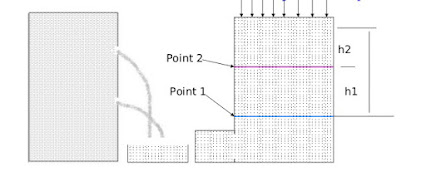Pressure Difference between layer of liquids at two points l Study Pharma l
Pressure Difference between layer of liquids at two points
Consider a water tank, create two narrow holes for opening of water. By the opening water flow outside at different rates of flow depends upon pressure on the liquid, gravity due to mass of liquid.
So that the force acting on the liquid at different points can be determined;
Force acting on liquid at point 1 = Force on the surface + force exerted by the liquid above the point 1
Now, substitute the force into pressure * surface area
then, Pressure at point 1 * surface area = pressure on the surface * surface area + mass * acceleration due to gravity:
P1*S = Ps*S + Volume*Density*Acceleration due to gravity
P1*S = Ps*S + Area*Height*Density*Acceleration due to gravity
P1*S = Ps*S + S*h1*d*g [ where, mass = volume*density ]
P1*S = S(Ps + h1dg) [ where, volume = area*height ]
P1 = Ps + h1dg
Pressure at point 2 * surface area = pressure on the surface * surface area + mass * acceleration due to gravity:
P2*S = Ps*S + Volume*Density*Acceleration due to gravity
P2*S = Ps*S + Area*Height*Density*Acceleration due to gravity
P2*S = Ps*S + S*h2*d*g [ where, mass = volume*density ]
P2*S = S(Ps + h2dg) [ where, volume = area*height ]
P2 = Ps + h2dg
Difference in pressure between layers of liquids at two points:
P2 - P1 = Ps + h2dg - (Ps + h1dg)
P2 - P1 = Ps + h2dg - Ps - h1dg
P2 - P1 = h2dg - h1dg
P2 - P1 = dg(h2 - h1)
Application:
Pressure Difference between layer of liquids at two points, follows under Fluid statics use in working of manometers to determine pressure difference between two points.
Thank You


Comments
Post a Comment